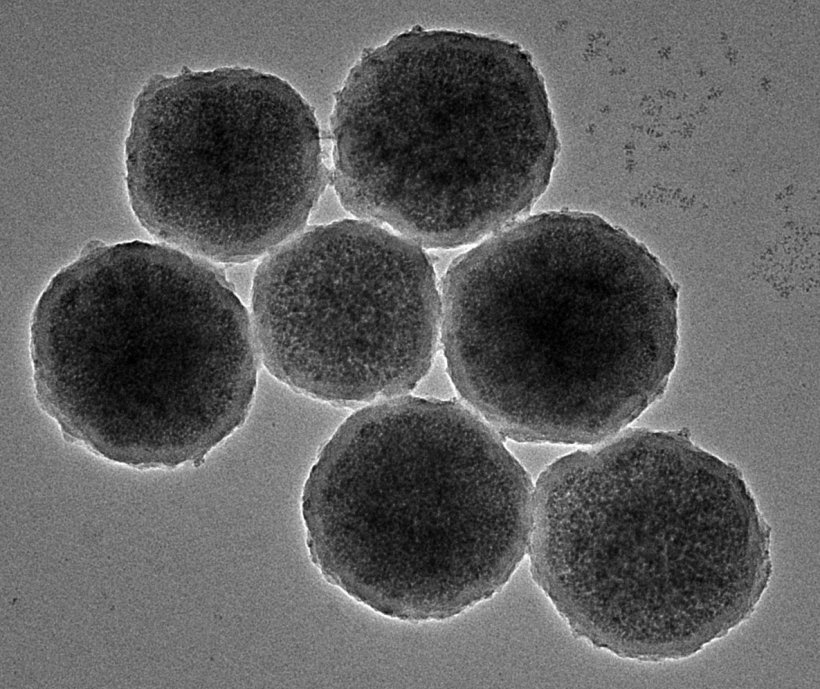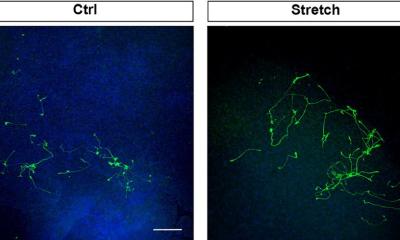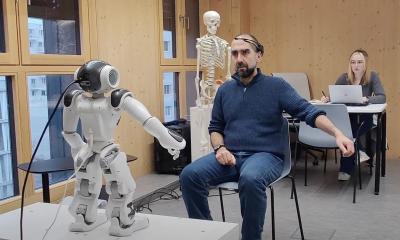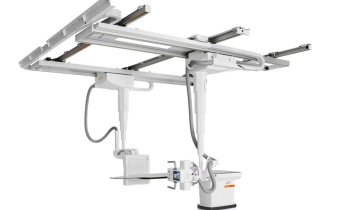
Image source: University of Edinburgh; image credit: Jian Wu
News • Thermal-responsive magnetic nanorobot collectives
Stopping brain bleeds from aneurysms with tiny robots
Researchers have created nanoscale robots which could be used to manage bleeds in the brain caused by aneurysms.
The team published their findings in the journal Small.
Their findings could enable precise, relatively low-risk treatment of brain aneurysms, which cause around 500,000 deaths globally each year. The medical condition – a blood-filled bulge on a brain artery that can rupture and cause fatal bleeds – can also lead to stroke and disability.
The study points to a future where tiny robots could be remotely controlled to carry out complex tasks inside the human body – such as targeted drug delivery and organ repair – in a minimally invasive way, researchers say. The team, involving researchers from the University of Edinburgh, engineered magnetic nanorobots – about a twentieth the size of a human red blood cell – comprising blood-clotting drugs encased in a protective coating, designed to melt at precise temperatures. In lab tests, several hundred billion such bots were injected into an artery and then remotely guided as a swarm, using magnets and medical imaging, to the site of an aneurysm. Magnetic sources outside the body then cause the robots to cluster together inside the aneurysm and be heated to their melting point, releasing a naturally occurring blood-clotting protein, which blocks the aneurysm to prevent or stem bleeding into the brain.
Nanorobots are set to open new frontiers in medicine – potentially allowing us to carry out surgical repairs with fewer risks than conventional treatments and target drugs with pinpoint accuracy in hard-to-reach parts of the body
Qi Zhou
The international team, co-led by clinicians from Shanghai Sixth People’s Hospital affiliated to Shanghai Jiao Tong University School of Medicine in China, successfully tested their devices in model aneurysms in the lab and in a small number of rabbits. The team says that nanorobots show potential for transporting and releasing drug molecules to precise locations in the body without risk of leaking into the bloodstream – a key test of the technology’s safety and efficacy. The study could pave the way for further developments towards trials in people. Their advance could improve on current treatments for brain aneurysms. Typically, doctors thread a tiny microcatheter tube along blood vessels before using it to insert metal coils to stem the aneurysm blood flow, or a mesh tube called a stent, to divert the bloodstream in the artery.
Researchers say their new technique could decrease the risk that the body will reject implanted materials, and curb reliance on anti-blood-clotting drugs, which can cause bleeding and stomach problems. The method also avoids the need for doctors to manually shape a microcatheter to navigate a complex network of small blood vessels in the brain to reach the aneurysm – a painstaking task which may take hours during surgery, researchers say.
Larger brain aneurysms – which can be difficult to stem quickly and safely using metal coils or stents – could potentially be treated using the new technique too. The study was led by a team from the UK and China who have also developed nanorobots to remove blood clots, which show potential in treating stroke.
"Nanorobots are set to open new frontiers in medicine – potentially allowing us to carry out surgical repairs with fewer risks than conventional treatments and target drugs with pinpoint accuracy in hard-to-reach parts of the body," said Dr Qi Zhou, the study's co-lead, from the University of Edinburgh's School of Engineering. "Our study is an important step towards bringing these technologies closer to treating critical medical conditions in a clinical setting."
Source: University of Edinburgh
09.09.2024











